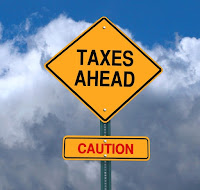The report, from the Treasury Inspector General for Tax Administration, said the IRS has a strategy in place as part of its Case Creation Nonfiler Identification Process to identify taxpayers who have not filed a tax return and are required to do so if their income is above a certain threshold. The IRS typically issues delinquency notices to more than 640,000 nonfilers each year whose tax extensions have expired.
While it is mostly an automated process, the IRS failed to identify and address approximately 1.9 million nonfilers with expired extensions in tax years 2012 and 2013. As of May of this year, those taxpayers still owed an estimated $7.4 billion.
Most nonfilers with expired extensions were not identified or addressed in tax year 2012 because of a programming error the IRS did not completely investigate or fix in a timely way. In tax year 2013, IRS management canceled this process for all taxpayers with expired extensions. The nonfiler process runs on a standalone basis each tax year, so the majority of nonfilers with expired extensions in tax years 2012 and 2013 will probably never be notified of their obligation and failure to file a tax return.
The IRS has identified high-income nonfilers as a high compliance risk and one of the agency’s top eight high-priority areas in its annual work plan, yet none of the high-income nonfilers with expired extensions were notified of their delinquency in tax years 2012 or 2013.
In February 2014, the IRS changed its nonfiler strategy and goals in an effort to increase compliance. However, as of July 2016, the IRS has still not implemented any of the nonfiler initiatives it has proposed. On top of that, the nonfiler strategy did not describe any specific actions to improve the compliance rate, including how to reach more of the nonfilers the IRS identifies each year and determining the effectiveness of the return delinquency notice in an effort to increase the response rate.
In response to the report, the IRS agreed with TIGTA’s recommendations and plans to take action.
“We will use your findings and recommendations, coupled with data analytics research that we plan to undertake, to help refine our Nonfiler Program strategy, with a dual goal of prioritizing as much of this work as our resources will allow and also developing a process for selecting productive nonfiler cases,” wrote Karen Schiller, commissioner of the IRS’s Small Business/Self-Employed Division.
“To find efficiencies, we will investigate the options for improving the effectiveness of the delinquency notice to increase the number of nonfilers who are contacted and the nonfiler response rate. As part of that process, we will collaborate with our Information Technology function to expand its review of the inventory volume and document fluctuations in inventory counts for each tax year, ensuring that anomalies are addressed.”
Read more at: Tax Times blog







